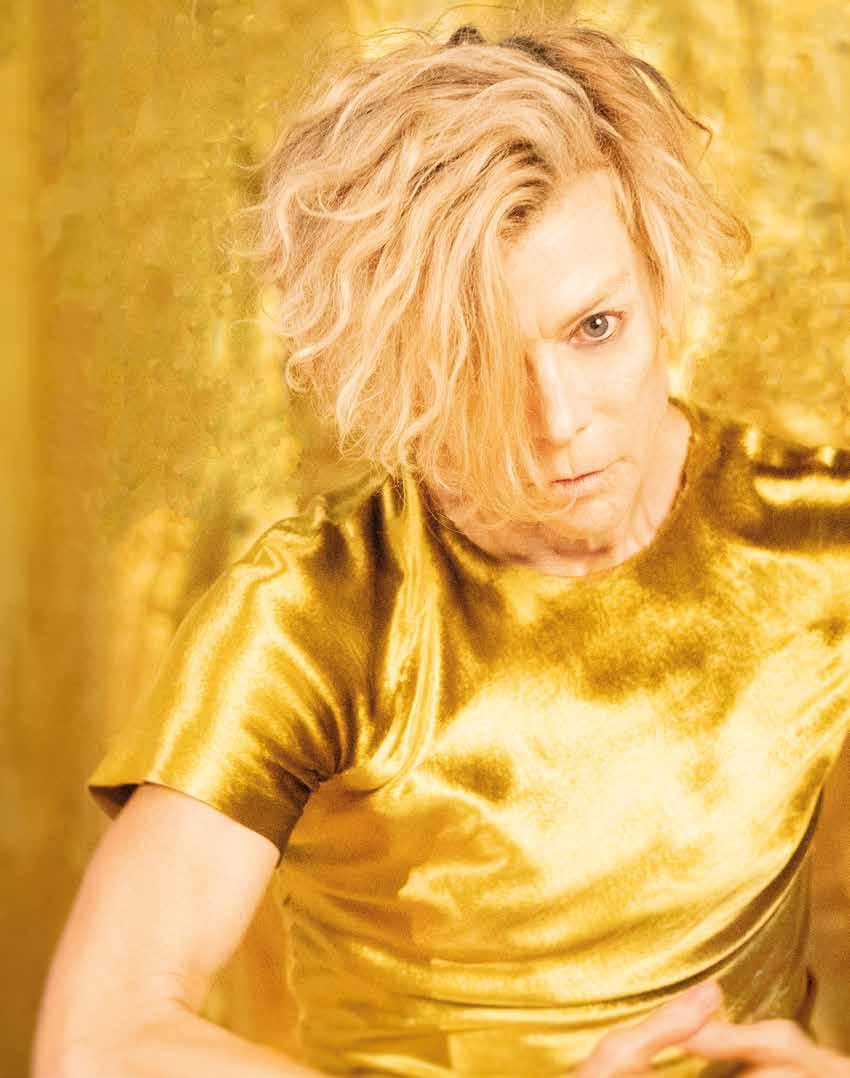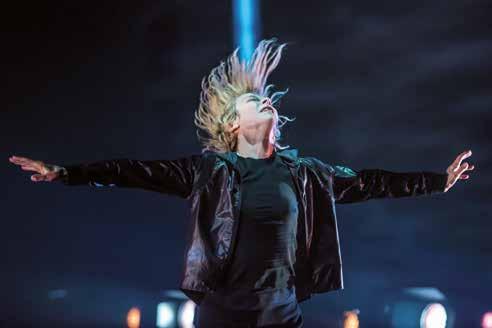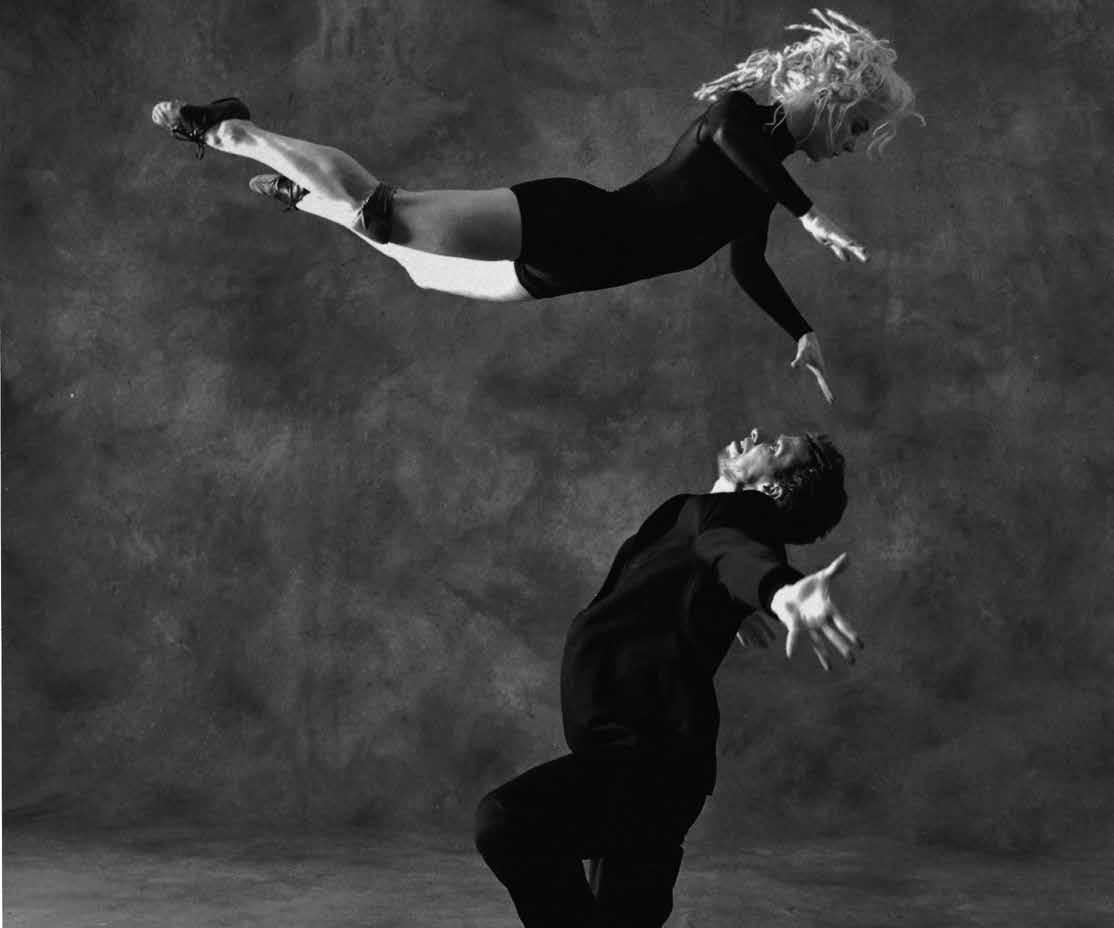
9 minute read
So Much Life SPECIAL EDITION
So Much Life
The dancer and choreographer Louise Lecavalier in conversation
Advertisement
What this world-famous Canadian dance artist does on stage is impossible to categorise within the genre of contemporary dance. It’s her. It’s like a mixture of entirely present, entirely real, and yet the ghost of another reality. Lecavalier’s career as a dancer goes back to the 1980s, when she was a member of Édouard Lock’s company La La La Human Steps. Today she’s her own boss.
It’s true: she speaks as fast as she dances. With emphasis, clear sentences, sometimes a slight hesitancy, new starts, lots of ‘becauses’. For the interview she appears on the screen with windswept hair, wide awake. It’s morning in Montréal, afternoon in Europe. The cancellation of all performances because of the pandemic came at precisely the wrong moment, she says. Being compelled to stay at home wouldn’t have been so bad a year ago, when she was working on her new piece. But “Stations” had just been completed. It premiered in Düsseldorf, then showed in Münster and Dresden. The rest of the tour, into the summer, including Berlin, is off. But she can’t simply begin the next piece early, because the dancer she plans to work with can’t travel. Louise Lecavalier sighs, but doesn’t complain.
So she went to the studio every day and rehearsed the solo. “It was like an addiction, having to carry on dancing!” After a while all the rehearsing didn’t seem to make sense any more, so she just trained.
Louise Lecavalier was born in 1958 and grew up in Montréal. Like many girls she was taken to ballet school at the age of four or five. But having to wear a black leotard and submit to being tugged at to see if she was suitable put little Louise off so much that without having danced a single step she never wanted to go back. Only at aged fifteen did a sign on a bus stop draw her back to ballet class. The friend she went with found everything easy: standing at the barre, leg forward, leg back. Yet in the more experienced dancers Louise saw “these fascinating possibilities of the human body”, the extraordinary complexity in even apparently simply exercises. “I knew that I knew nothing at all.” But she wanted to know, absolutely.
“Dedicated”
During the CEGEP, which precedes university, she joined a small dance group in which guest teachers choreographed contemporary dance. Its way of thinking, says Louise, excited her more than that of ballet, which she primarily appreciated for its ‘technique for intelligent bodies’. Her first professional appearance took place as a substitute dancer in a new company. Because she wanted to become a sports teacher, she enrolled at the university, went for one day and then never again. Instead she signed a one-year contract with the dance company. She went to study in New York, “then Édouard Lock called me”. One thing led to another. “I always thought, I’ll dance for a year, then I’ll do something else.” A dance career? No, “I wasn’t at all convinced of myself.” She laughs..
Never enough
The fascination with dance technique remained. She wanted to work on it all the time. Because, as she felt, it was neglected by the typically contemporary research into ‘ideas’. There was the expectation that a dancer would at some point be able simply to be “their own beautiful self” on stage, and that would be enough. It wasn’t enough for Louise. But now: “At this point in my life I think, aha, there’s something else.” The discipline of hard training is perhaps so ingrained in her body that she doesn’t need to worry about it or have to put continual movement on stage.
She never wanted to stick to any one thing she had learned. And she wanted to trust. “To learn, you need to trust and be less fearful.” Though she isn’t totally serene: “I can become very dramatic, and I have my own personal fears. I work on them all the time.” She’s less affected by dangers from outside.
This one can see in her dance pieces. At first she had other people to choreograph for her, including Crystal Pite and Benoît Lachambre, whose double bill of “Lone Epic” and “I is memory” was shown in Berlin in 2006. Since 2012 she has created her own choreographies, solos and duets. They can’t easily be decoded, which is one of their qualities. Her movement vocabulary avoids the chic, elegant or everyday. It’s more like fighting: thrusting, lunging, evading, coaxing. At times you can place it, but never anticipate where it goes. Something is always shifting, along with the recognisability (or not) of an opponent. Tension is release in the fluttering of a hand, the wobble of a lower leg, but never completely, so the drive never dies away. This dancer-choreographer doesn’t put exhaustion on show, like many others. She uses light to mark out lines or areas, a back panel or chromatically changing columns to provide orientation or confine energy like cutting or calming rocks against the dance wave.
Tumult
her efforts to attain these and to “be like the others” had any success. Until she realised that “I have to trust the dance I feel within me. With this I can also speak to other people.” The same way as building up any other relationship. And so she left the security of her company contract.
In 1999 she again resigned from a company, after eighteen years with La La La Human Steps. The ensemble had expanded and gone in the direction of ballet. Lecavalier felt “incomplete” in what had become a very organised apparatus. Enough. “I was naive enough to believe I could start over. Like a child.” She loved Édouard Lock’s work, she says. What she doesn’t say is that she was loved for her contribution to it, for her performances, energy, punkiness, tempo, for throwing her body into the air and her horizontal spin. “She was my heroine”, raves one of her fans from the mid-80s, Stefan Schwarz. As programme director of the Tanzhaus NRW he has made sure that Lecavalier has been able to premiere her pieces in Düsseldorf since “So Blue” in 2012.
Not least among her achievements has been to extend the reach of contemporary dance, as her projects with Lock were seen by audiences in the thousands: the performances with David Bowie in 1988 and on his world tour in 1990, and in Frank Zappa’s orchestral concert “The Yellow Shark”, with the Ensemble Modern, which went to Frankfurt am Main, Berlin and Vienna in 1992.
Beautiful demons
Louise Lecavalier has won many awards. At one ceremony, in 2017, she described herself as a dance worker. Then, she says today, she thought it was only “hard, hard work” in the studio that made her what she was. In the meantime she sees herself as a performer and feels hardly any different in the studio than she does on stage. This state, in which she tries to link or refine
“Stations” © Dieter Wuschanski, 2020

movement phrases in rehearsal, is very similar to that of a per formance.
And then she dances these incredibly quick small steps, arms in the air – blink and you’ll miss them – crossing, vibrating, touching, releasing, like a live wire, charged with energy that’s both familiar and eerie, that makes her crawl and then hover. So where does the movement come from? “I’m a mind dancer. Dance is my thinking. My thoughts are in my head, but also in my fingers. I hope that after all these years of dancing my thoughts and my impressions of the world move quite freely in my body.” It’s like speaking. “Every part of the body will speak, not just the hands but everything.”
Between holding on and flying free
Louise Lecavalier says she always wanted to call a piece “Stations” [ which is now the name of her latest solo –ed.] for a long time. But “So Blue” (2012), her first choreography, was too blue and melancholic. Then “Battleground” (2016) was a struggle. With every creation she finds an idea to work through, and after five minutes, “boom”, there’s the next. They should actually be stations: here, then there and there. “But it never works out that way! Because things connect. One dance brings me to the next station, so it becomes a journey.” This time she didn’t want to have nine or ten sections, as in the previous pieces, but only four longer ones. But she got into the connection trap again, although, as she observes, the worlds her choreography explores need ends.
The term ‘station’, she says, also reminds her of the Stations of the Cross, each one of which has a certain aura and stands for a particular moment in a story. Or of space stations: “There’s movement there.”
“Death is very present in my life”
If bearing a child is one of life’s important stations – Lecavalier had twins – then what about death? Louise pauses. “I don’t know yet.” She laughs. “Death has always been close, since my birth. Perhaps that’s why I’m so alive. She expresses surprise about a recent interviewer who had never lost a relative. “You can get to fifty without losing parents, a brother, lover, best friend or teacher?”
And age? She’s only really noticing it now, during lockdown. “Oh, I’m sixty-one. Okay, that’s not so old. Nothing dramatic. But I’m not twenty-five.” She won’t be ab-
le to go on dancing like this for ever. “For me it’s a gift to be able to physically get through a performance.” Her next piece might be different. But perhaps not. “I do what I have to do. I follow my inner movement”, is how Louise Lecavalier describes her studio work. So this new piece became quite different from its predecessor, much more exhausting than “So Blue” before it. From the necessity of movement, and what had to be said.
What remains to be said
She was always a keen reader: books with philosophical depth and “intellectual intensity”, such as those of Italo Calvino. Sylvain Tesson and the anthropologist Serge Bouchard echoed her worries about the environment and people’s treatment of one another. Which is why she made a solo, “Stations”. Not about a relationship to anyone, but about one’s own place in the world. T

Louise Lecavalier | Michael Dolan, Choreography: Édouard Lock, La La La Human Steps © Wolfgang Kirchner, 1995










